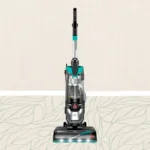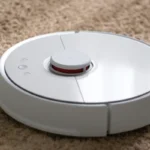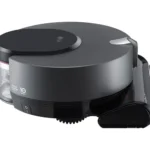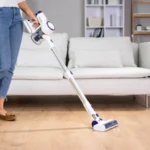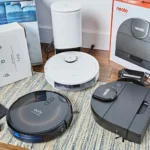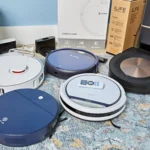Have you ever imagined a future where you never have to sweep or vacuum your floor again? With technology rapidly advancing, it’s not hard to believe that robot vacuum cleaners could become a common appliance in every household. These small yet effective machines have already made life easier for many people, but what can we expect in the future? In this article, we will explore the latest advancements and trends in robot vacuum cleaners and the challenges that still need to be overcome. We will discuss the exciting possibilities of what the future holds for these little helpers, with groundbreaking features such as artificial intelligence, robot swarms, and self-cleaning mechanisms. So, let’s dive into the future of robot vacuum cleaners and see what the possibilities hold.
Advancements in Robot Vacuum Cleaners
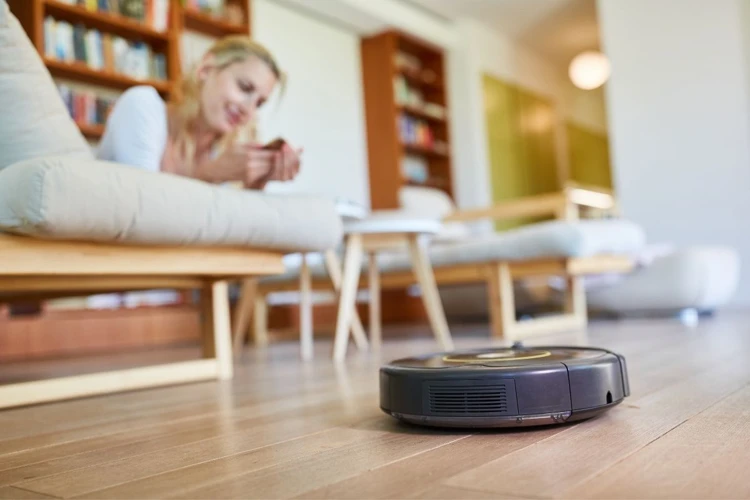
As technology advances, so do the capabilities of robot vacuum cleaners, which are quickly becoming an indispensable part of modern home cleaning routines. With features such as Lidar Technology, Object Recognition, Better Battery Life and Improved Suction, robot vacuums are able to clean more efficiently and effectively than ever before. In this article, we’ll take a closer look at the latest advancements in robot vacuum cleaners and what they mean for the future of home cleaning. Whether you already own a robot vacuum or you’re considering buying one, it’s important to stay up to date with the latest trends and technologies. So, let’s dive in and explore what’s new in the world of robot vacuums! If you want to learn more about the basics of robot vacuum cleaners, you can check this detailed guide.
Lidar Technology
Lidar Technology is the latest innovation in the world of robot vacuum cleaners. It is a laser-based mapping system that helps the robot cleaner navigate around the house with ease. The technology emits a low-power laser that sends out pulses to create a precise 3D map of the environment. The robot vacuum then uses this map to plan its cleaning route around the house.
With Lidar technology, robot vacuums can clean more efficiently and cover every corner of your house. The precise mapping system also allows for better cleaning coverage and reduces the chances of it missing a spot. Lidar-based robots can navigate under furniture and around obstacles with more finesse, making them ideal for small apartments and big houses alike.
Some of the best robot vacuum cleaners in the market today use Lidar technology. For instance, the Roomba i7+ is equipped with a state-of-the-art mapping system that learns the layout of your home and remembers it for the next time. The Roborock S7 features a 4th generation Lidar navigation system that scans the environment in seconds, allowing it to clean up to 25% faster.
Robot vacuum cleaners that use Lidar technology are also equipped with advanced sensors and cameras that detect different surfaces and objects, such as carpets and stairs. This helps them to work effectively and avoid bumping into obstacles around the house.
Lidar technology is a game-changer for the robot vacuum cleaner industry, and it promises to revolutionize how we clean our homes. If you’re interested in purchasing a robot vacuum, using Lidar technology, make sure to check out our best robot vacuum guide for more information.
Object Recognition
One of the most significant advancements in robot vacuum cleaners is their ability to recognize objects in the room they are cleaning. Using advanced sensors and software, robot vacuums can now detect and classify objects such as furniture, electrical cords, and other household items. This allows the robot vacuum to avoid obstacles and clean more efficiently.
Object recognition technology is typically powered by advanced sensors, including lasers, cameras, and infrared sensors. These sensors work together to create a digital map of the room the robot vacuum is cleaning. By analyzing this map, the robot vacuum can detect objects and distinguish them from the floor or other surfaces. This allows the robot vacuum to avoid obstacles and navigate around furniture, walls, and other objects.
The ability to recognize objects is a significant step forward for robot vacuums. By avoiding obstacles, the robot vacuum can clean more efficiently and complete its cleaning tasks more quickly. This is especially important for robot vacuums designed for larger homes, where obstacles can slow down the cleaning process.
Object recognition technology is becoming increasingly common in robot vacuums from various brands. For example, the top robot vacuums from brands such as iRobot and Neato all feature advanced sensors and object recognition technology. However, it’s worth noting that more advanced technology usually comes with a higher price tag.
Object recognition technology is a major step forward for robot vacuum cleaners. With this technology, robot vacuums can navigate around obstacles and clean more efficiently than ever before. By maximizing efficiency and avoiding obstacles, these vacuums can deliver a more thorough cleaning job. For more tips on maximizing efficiency with your robot vacuum, check out our article on maximizing efficiency with a robot vacuum.
Better Battery Life
Robotic vacuum cleaners have come a long way since their inception, and one area where significant progress has been made is in battery life. Earlier, robot vacuum cleaners struggle to keep battery life long enough to clean the entire house in one go, but that’s not the case anymore. Thanks to advancements in battery technology, today’s robot vacuum cleaners can last for hours to clean even the most significant homes.
Below is a table comparing the battery life of some of the best robot vacuum cleaners available today.
| Robot Vacuum Model | Battery life |
|---|---|
| iRobot Roomba i7+ | Up to 75 minutes |
| Shark IQ | Up to 90 minutes |
| Eufy BoostIQ RoboVac 11S | Up to 100 minutes |
| Samsung POWERbot R7040 | Up to 60 minutes |
As seen in the table above, the Eufy BoostIQ RoboVac 11S provides the longest battery life of up to 100 minutes, making it an excellent option for larger homes with more floor space to cover. While the iRobot Roomba i7+ may not provide the longest battery life, it does have a unique feature where it automatically recharges and resumes cleaning until the job is done. Thus, it is ideal for busy homeowners.
Significant strides have been made in battery life for robot vacuum cleaners, and as technology advances, we can expect better battery life in the future. With a more extended lifespan, robot vacuum cleaners will be more efficient, making cleaning more comfortable and hassle-free.
Improved Suction
One of the major advancements in robot vacuum cleaners is their improved suction power. With the advancement of technology and engineering, the suction power of robot vacuums has increased significantly over the years. This improvement has been made possible through various ways, such as:
- Better motors: Robot vacuum cleaners now come with powerful motors that can generate high suction power. Some of the robot vacuums even have brushless motors that are more efficient and generate less noise during operation. This allows the vacuum to pick up more dirt, dust, and debris effectively, without causing too much disturbance in the household.
- New brushes: Many robot vacuums are equipped with different brush types for different cleaning needs. For example, some have rubber brushes that work well on carpets, while others have bristled brushes that work better on hard floors. With these new brushes, the robot vacuum can effectively pick up more dirt and debris, leaving your floors cleaner than ever before!
- Improved filters: Some robot vacuums feature advanced filtering systems that can capture even the smallest particles of dust and allergens from the air. These filters provide a cleaner and healthier living space for you and your family, making robot vacuums a valuable addition to any home.
With improved suction power, robot vacuums can now clean floors more thoroughly and efficiently than ever before. This makes them the perfect tool for busy families who don’t have the time or energy to clean their homes manually. So, if you’re looking for a way to keep your living space clean while saving time and energy, you might want to consider investing in a robot vacuum with improved suction power.
Trends in Robot Vacuum Cleaners
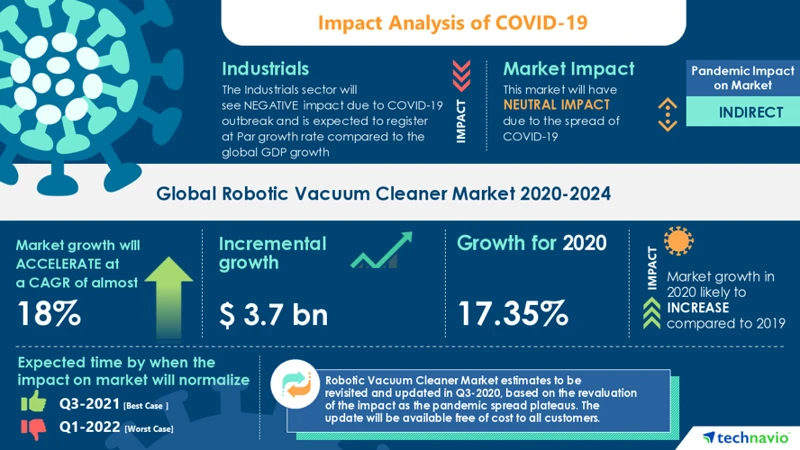
As technology advances, so do our cleaning habits. Robot vacuum cleaners have been all the rage in recent years, and for good reason. With smart home integration, increased efficiency, and multifunctional cleaning, these handy devices have become a staple in many households. Let’s dive deeper into the trends that are shaping the future of robot vacuum cleaners.
Smart Home Integration
One of the biggest trends in the world of robot vacuum cleaners is their integration with smart homes. With the rapid rise of the Internet of Things (IoT), more and more homeowners are looking to control their home appliances remotely, and robot vacuums are no exception.
Seamless Integration: One of the key benefits of smart home integration is that it allows robot vacuums to seamlessly connect with other smart devices in the home, such as voice-activated assistants like Amazon’s Alexa or Google Home. This means that rather than having to physically press a button on the vacuum to start cleaning, homeowners can simply give a voice command, or even set a cleaning schedule through a mobile app.
Remote Monitoring: Smart home integration also enables remote monitoring of the vacuum’s cleaning progress. Homeowners can receive notifications when a cleaning cycle is complete, or if the vacuum runs into any issues, such as getting stuck under furniture.
Customization: Additionally, with smart home integration comes increased customization. Users can set specific cleaning preferences, such as which rooms the vacuum should clean, or create “no-go” zones where the vacuum should avoid. This makes it easier for homeowners to tailor their cleaning routine to their individual needs.
Data Analysis: Another potential benefit of smart home integration is the ability to analyze and utilize cleaning data. Robot vacuums equipped with sensors can gather information about a home’s layout and cleaning patterns, which could be used to create more efficient cleaning routes in the future.
Smart home integration is a significant trend in the world of robot vacuum cleaners, offering benefits such as seamless device connectivity, remote monitoring, customization, and potential data analysis. As the IoT continues to grow and expand, we can expect to see even more advanced integration and features becoming available for these convenient cleaning devices.
Increased Efficiency
One of the top trends in robot vacuum cleaners is the increased efficiency of these remarkable devices. Robot vacuum cleaners are already popular among many homeowners as they save time and energy. With the adoption of new technologies and functionalities, the efficiency of robot vacuum cleaners is expected to skyrocket in the coming years.
The first major improvement in robot vacuum cleaner efficiency is better sensors. Modern robot vacuum cleaners with advanced sensors can now detect obstacles such as furniture, walls, and stairs, which enables them to work more efficiently. In fact, some robots use advanced sensors that can even detect and avoid pets, preventing the machine from getting stuck or tangled.
Another aspect of improved efficiency is the design of more powerful suction systems. Some models already feature advanced motor systems that create suction powerful enough to pick up large debris like sticks and small rocks. Future models are likely to surpass current designs.
Moreover, better battery life is a key factor in increasing robot cleaner efficiency. Advances in battery technology have allowed companies to create robot vacuum cleaners that can run for several hours without the need for a recharge. This means less downtime and a more efficient cleaning schedule.
Finally, advanced programming is making today’s robot vacuum cleaners smarter and more efficient. Many robots are now equipped with advanced algorithms that enable them to efficiently map a room, clean intelligently, and detect areas that require more attention. These features help the robot vacuum cleaner do its job more efficiently and effectively.
The quest for increased efficiency in robot vacuum cleaners has led to the development of new and innovative technologies. As technology evolves and these devices become more intelligent, the efficiency of robot vacuum cleaners will continue to improve, making them a valuable addition to any home.
Multifunctional Cleaning
The robot vacuum cleaner industry is continuously innovating, and one of the most notable trends observed is the rise of multifunctional cleaning. Today, consumers look for more than just carpet and floor cleaning from their smart cleaning devices, and as such, manufacturers are incorporating new capabilities into their products to accommodate these demands.
Some of the most popular multifunctional features of robot vacuum cleaners include spot cleaning, mopping, and UV sterilization. Spot cleaning, for instance, enables users to clean specific spots with a single button push, which is helpful for spills or pet accidents. Mopping, on the other hand, allows the robot vacuum cleaner to mop hard floors, sucking up dirt and debris as it goes. Finally, UV sterilization is an excellent option for those who want their homes to be germ-free, as it uses ultraviolet light to kill germs and bacteria.
Below is a table showcasing the most popular multifunctional features in robot vacuum cleaners:
| Feature | Description |
|---|---|
| Spot cleaning | Allows users to clean specific spots with a single button push |
| Mopping | Cleans hard floors by sucking up dirt and debris as the device moves |
| UV sterilization | Uses ultraviolet light to kill bacteria and germs on surfaces |
Multifunctional cleaning is a crucial trend in the robot vacuum cleaner market, and these features offer users more convenience and efficiency. Manufacturers are beginning to integrate more capabilities into their devices, and we can expect to see even more innovations in this area in the future.
Challenges Facing Robot Vacuum Cleaners
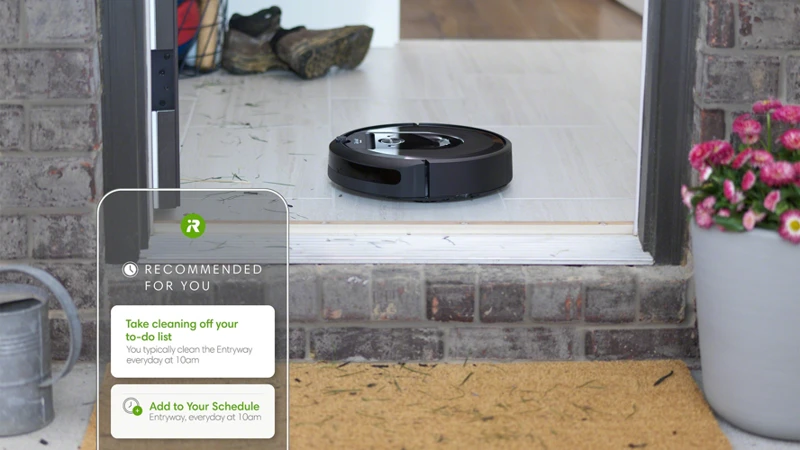
As we look towards the future of robot vacuum cleaners, it’s important to consider the challenges that currently face the technology. Despite their many advantages, these machines are still far from perfect. A number of significant obstacles stand in the way of creating the most efficient and effective cleaners possible. From issues with navigation and mapping, to problems with cost and maintenance, there are a range of hurdles to overcome if we want to truly revolutionize the way we keep our homes clean. In this section, we’ll explore these challenges in more detail, and look at some possible solutions to help move us towards a brighter future for robot vacuum technology.
Navigation and Mapping
One of the biggest challenges facing robot vacuum cleaners is navigation and mapping. In order for them to operate effectively and efficiently, they need to be able to navigate the environment around them and create an accurate map of the space they are cleaning.
To achieve this, many robot vacuum cleaners use a combination of sensors, cameras, and algorithms to create a map of the space they are cleaning. However, there are still some limitations in terms of their ability to accurately map and navigate complex environments.
One of the main issues is the fact that robot vacuum cleaners can struggle with obstacle detection. While they may be able to detect larger objects, such as pieces of furniture, they can sometimes struggle with smaller obstacles, such as toys or cables, which can cause them to get stuck or tangled.
Another issue is that some robot vacuum cleaners may struggle with accurately detecting different types of flooring surfaces. For example, some may have difficulty transitioning from carpet to hardwood flooring, or vice versa. This can limit their ability to clean effectively and efficiently.
Finally, there is also the issue of cost. Many of the most advanced robot vacuum cleaners on the market come with a high price tag, which can make them prohibitive for many people. Additionally, the cost of maintenance and repairs can also be significant over time.
While advancements in technology have greatly improved the navigation and mapping capabilities of robot vacuum cleaners, there are still some challenges that need to be addressed in order to make them even more effective and efficient. The table below provides a summary of the challenges facing navigation and mapping in robot vacuum cleaners:
| Challenge | Description |
|---|---|
| Obstacle detection | Robot vacuum cleaners may struggle with accurately detecting smaller obstacles, such as toys or cables. |
| Flooring surface detection | Some robot vacuum cleaners may have difficulty accurately detecting different types of flooring surfaces, which can limit their cleaning ability. |
| Cost | Many of the most advanced robot vacuum cleaners on the market come with a high price tag, which can make them prohibitive for many people. |
| Maintenance | The cost of maintenance and repairs for robot vacuum cleaners can be significant over time. |
Obstacle Detection
Ensuring that robot vacuum cleaners can easily detect and navigate around obstacles is crucial for their efficiency and functionality. With advancements in technology, robot vacuums are getting better at obstacle detection by utilizing a range of sensors and algorithms. Here are some ways in which robot vacuum cleaners are improving their obstacle detection capabilities:
- Laser sensors: Lidar technology helps robot vacuums to detect objects and map out their surroundings in real-time. By bouncing laser beams off objects, robot vacuums can create 3D maps of their environment and navigate accordingly. This allows them to detect and avoid obstacles with greater accuracy than ever before.
- Infrared sensors: Another useful tool for obstacle detection is infrared technology. These sensors can measure distances to objects by detecting the heat that they emit. Robot vacuums that use infrared sensors can detect objects without needing to physically touch them, which helps to prevent collisions.
- Bumper sensors: Some robot vacuums are equipped with bumper sensors that detect when they have made contact with an object. While these sensors are not as advanced as laser or infrared sensors, they can still help to prevent damage to both the robot vacuum cleaner and the object it has collided with.
Despite these advances in obstacle detection technology, there is still room for improvement. One issue that robot vacuums face is detecting clear or transparent objects, such as glass tables or mirrors. To address this, some manufacturers are exploring the use of 360-degree cameras that can capture a more complete view of the robot vacuum’s surroundings.
As obstacle detection technology continues to evolve, robot vacuum cleaners will become even better at navigating around obstacles, resulting in more efficient and effective cleaning.
Cost
When it comes to robot vacuum cleaners, cost is one of the biggest challenges facing manufacturers and consumers alike. While these devices have become more affordable over time, they are still not within reach for everyone. Here are some factors that contribute to the relatively high cost of robot vacuum cleaners:
- Advanced Technology: To deliver the kind of performance and functionality that consumers expect, robot vacuum cleaners must incorporate a range of advanced technologies such as Lidar, object recognition, and artificial intelligence. These technologies require significant investment in research and development, which drives up costs.
- Quality Components: Robot vacuum cleaners must be built to last, which means using high-quality materials and components. For example, strong motors, high-end sensors, and durable brushes all increase the cost of production.
- Brand Recognition: Consumers are often willing to pay more for products from well-known brands, which means that companies can charge a premium for their robot vacuum cleaners simply because of their name recognition.
Despite these challenges, there are steps that manufacturers can take to reduce the cost of robot vacuum cleaners. For example:
- Streamline Production Processes: By optimizing their production processes, manufacturers can reduce waste and minimize the costs associated with manufacturing robot vacuum cleaners. For example, they may use automation, lean manufacturing techniques, or other methods to improve efficiency.
- Design for Cost Optimization: To keep costs down, manufacturers may design their robot vacuum cleaners with cost in mind from the outset. This could involve using fewer or less expensive components, simplifying the device’s design, or reducing its overall size and complexity.
- Reduce Overhead Costs: Finally, manufacturers may be able to reduce the cost of their robot vacuum cleaners by minimizing the overhead associated with marketing, distribution, and other aspects of their business. For example, they may choose to sell directly to consumers online rather than through retail channels, or they may partner with other companies to leverage existing logistics and distribution networks.
By taking these factors into consideration, manufacturers can work to make robot vacuum cleaners more accessible to consumers. As technology continues to advance, it is likely that we will see prices come down even further, opening up this technology to a wider audience.
Maintenance
Ensuring proper maintenance for any tool or device is essential for its longevity and optimal performance, and robot vacuum cleaners are no exception. With advancements in technology, newer models of robot vacuum cleaners require less maintenance than their predecessors, however, proper upkeep is still essential.
Here are some important maintenance tips for robot vacuum cleaners:
- Cleaning the filter: Robot vacuum cleaners have a filter that needs to be cleaned regularly. It is advisable to clean the filter every two weeks. Dust and debris can accumulate in the filter, reducing its suction power and causing the robot vacuum cleaner to work harder.
- Emptying the dustbin: Once the robot vacuum cleaner has finished cleaning, it is important to empty its dustbin. When the dustbin is full, it can compromise the machine’s efficiency and lead to further cleaning problems.
- Cleaning the brushes: The brushes in robot vacuum cleaners can become entangled with hair and debris over a period of use. Cleaning the brushes regularly, say every one to two weeks, can ensure they remain in tip-top condition.
- Checking the wheels: The wheels of robot vacuum cleaners can also get clogged with dirt and dust. Regularly checking and cleaning the wheels can help the device glide smoothly across the floor and avoid any unnecessary wear and tear.
- Battery maintenance: Maintaining the battery of the robot vacuum cleaner is also important. Over time, batteries tend to lose their charging capacity. It is important to replace the battery when it is not holding a charge as well as it used to.
Failing to maintain your robot vacuum cleaner can lead to a decrease in its efficiency and shorten its lifespan. Regular maintenance is important to ensure that the robot vacuum cleaner functions at its optimum performance level.
The Future of Robot Vacuum Cleaners
When it comes to the future of robot vacuum cleaners, possibilities seem endless. With recent advancements in technology and the growing trend of smart home integration, it’s safe to say that the limitations of these devices are quickly diminishing. In this section, we’ll explore some of the most exciting developments on the horizon, from artificial intelligence and self-cleaning capabilities to innovative designs and materials. So, let’s dive into the world of futuristic cleaning technology and imagine what our homes may soon look like.
Artificial Intelligence
As technology continues to evolve, so do robot vacuum cleaners. One of the most exciting developments in this area is the implementation of artificial intelligence (AI). By incorporating AI, robot vacuum cleaners can adapt and learn as they go, making them more efficient and effective.
One example of AI in robot vacuum cleaners is through machine learning algorithms. These algorithms allow the cleaner to learn from past cleaning experiences and become more efficient over time. This means that the robot vacuum cleaner can continually improve and become more effective at cleaning, even as the environment changes.
Another way that AI is being used is through voice commands and smart home integration. With the rise of digital assistants such as Amazon’s Alexa and Google Home, robot vacuum cleaners can be integrated into the user’s smart home, allowing the user to control and program the cleaner through voice commands. This makes it easier and more convenient for users to start and stop cleaning sessions, schedule cleanings and change cleaning patterns.
To further enhance the AI capabilities of robot vacuum cleaners, manufacturers are also experimenting with adding sensors and cameras that can detect changes in the environment and adjust the cleaning settings accordingly. This will allow the robot vacuum cleaners to avoid obstacles and find areas that require additional cleaning, further improving their effectiveness.
The implementation of AI in robot vacuum cleaners is an exciting development that is sure to revolutionize the cleaning industry. By learning and adapting over time, robot vacuum cleaners will become even more powerful and efficient, ultimately leading to cleaner and healthier environments.
| Advantages | Challenges |
|---|---|
| Adapting and learning as it goes | Initial implementation costs |
| Continual improvement over time | Technical difficulties with sensors and cameras |
| Voice commands and smart home integration | Data privacy concerns |
Robot Swarms
In the near future, we can expect to see a significant evolution in how robot vacuum cleaners function. One trend that has gained traction in recent years is the concept of robot swarms, which involve multiple robots working collaboratively to complete tasks.
One of the most significant benefits of a robot swarm is the increased efficiency and flexibility it provides. With multiple robots working in tandem, they can divide and conquer tasks more quickly and effectively than a single robot could alone. Additionally, robot swarms can dynamically adapt to changes in their environment, allowing them to tackle new situations with ease.
However, the implementation of robot swarms also presents new challenges that need to be overcome. For example, coordinating the actions of multiple robots requires a sophisticated level of communication and planning. Additionally, maintaining a swarm can be challenging, especially if robots require regular maintenance or replacement.
Despite these challenges, the potential benefits of robot swarms are significant. In time, we may see swarms of robots that can not only vacuum floors but also perform other household tasks like washing dishes, doing laundry, or taking out the trash.
The concept of robot swarms represents an exciting new direction for the future of robot vacuum cleaners. As this technology continues to evolve and improve, we can expect to see even more innovative and groundbreaking applications of this exciting technology.
| Pros | Cons |
|---|---|
| Increased efficiency and flexibility | Requires sophisticated communication and planning |
| Can divide and conquer tasks quickly | Can be challenging to maintain and replace |
| Dynamically adapts to changes in environment | |
| Potential for expanding beyond just vacuuming |
Self-Cleaning and Self-Emptying
One of the most exciting advancements in the future of robot vacuum cleaners is self-cleaning and self-emptying features. Rather than requiring owners to constantly clean the robot itself or manually empty the dustbin, new models will be designed to do this automatically.
This would be possible through the integration of new technologies like sensors and self-diagnosis systems that could detect when the dustbin is almost full and automatically empty it into a designated container or dock.
Some companies are already working on prototypes with this feature, like the iRobot Roomba s9+. This robot vacuum cleaner comes with a Clean Base that automatically empties the vacuum’s bin into a disposal bag. In this way, it can hold up to 30 bins’ worth of dirt and debris, which means that it can go up to a month without needing any attention.
The self-cleaning and self-emptying feature promises to make robot vacuum cleaners even more convenient and efficient for busy people who are always on the go. This is especially true for pet owners, allergy sufferers, or anyone living in dusty environments.
The table below shows some of the pros and cons of self-cleaning and self-emptying features:
| Pros | Cons |
|---|---|
| Convenience – Never have to worry about emptying the dustbin | Higher cost – Models with this feature tend to be more expensive |
| Better for allergy sufferers – Less exposure to allergens and dust | Limited options – Currently, only a few models on the market offer this feature |
| Good for pet owners – Can handle higher levels of pet hair and debris | May require more maintenance – Some models may require more frequent cleaning and maintenance due to the added feature |
It’s worth noting that there may be some downsides to self-cleaning and self-emptying features. For instance, models with these features tend to be more expensive than those without them. Additionally, not all models on the market offer this feature, so there may be limited options for consumers who want it. Finally, some models may require more frequent cleaning and maintenance due to the added feature.
However, the development of self-cleaning and self-emptying features marks a significant improvement in the functionality and accessibility of robot vacuum cleaners. As more companies continue to invest in this technology, we can expect to see even more advanced models in the years to come.
Automated Maintenance
As with any household appliance, robot vacuum cleaners require regular maintenance to function efficiently. However, the process can be time-consuming and tedious for busy homeowners. That’s where automated maintenance comes in, providing a hassle-free approach to keeping robot vacuums in top condition.
Here are a few ways automated maintenance can help:
- Self-Cleaning Brushes: One common robot vacuum maintenance task is removing hair and debris from the brush roll. With self-cleaning brushes, the vacuum can automatically remove tangled hair and other debris, preventing buildup and maintaining optimal performance
- Automatic Filter Replacement: Dirty filters can affect suction power, so it’s important to replace them regularly. Automated maintenance can take care of this task by automatically detecting when filter replacement is necessary and ordering new filters as needed
- Scheduled Cleanings: By setting a cleaning schedule, homeowners can ensure their robot vacuum is always maintained and ready to clean. The vacuum can be programmed to automatically perform routine maintenance tasks, such as cleaning the suction motor and emptying the dustbin, at regular intervals
Benefits of Automated Maintenance:
Automated maintenance offers several benefits over traditional maintenance practices. For one, it saves time and effort, freeing up homeowners to focus on other tasks. Additionally, automated maintenance is more reliable because it ensures that maintenance tasks are performed consistently and timely. This, in turn, extends the life of the vacuum and improves its overall performance.
As manufacturers continue to improve the design and functionality of robot vacuum cleaners, automated maintenance is sure to become a standard feature. By taking the hassle out of maintenance, robot vacuums can deliver the cleaning power and convenience that homeowners desire without the burden of ongoing upkeep.
Innovative Designs and Materials
The future of robot vacuum cleaners is not only about improving their functionality and features, but also about their aesthetic appeal, durability and sustainability. Manufacturers are looking into developing innovative designs and materials for their robot vacuums. These designs and materials will enhance the overall performance and experience of the robot vacuum.
1. Lightweight and Sleek Designs: The robot vacuum cleaners of the future will be lighter and sleeker in design. The robot vacuums will be easy to maneuver around the house and will take up minimal space.
2. Customizable Skins: In addition to the sleek designs, robot vacuum cleaners will be more customizable. Users will be able to change the skin of their robot vacuum to fit their home decor or personal style.
3. Durable and Sustainable Materials: The use of durable and sustainable materials in the manufacturing of robot vacuum cleaners will become more common. This includes using recycled materials that are environmentally friendly, such as biodegradable plastics.
4. Improved Wheels: Robot vacuums of the future will have improved wheels that allow for better traction and maneuverability on all different types of surfaces. This will improve their ability to clean carpets and hard floors.
5. Unique Shapes: The current round shape of most robot vacuum cleaners will evolve into more unique shapes, such as triangle or square. These new shapes will provide better corner and edge cleaning capabilities.
6. Personality and Charisma: As robot vacuums become more prevalent in households, users will start seeking more than just efficient cleaning. Manufacturers will begin to create personalities and charismas for their robot vacuums, making them feel more like a friend or companion rather than just a cleaning tool.
The designs and materials of the future robot vacuum cleaners will contribute to their functionality and user experience. They will become more than just a cleaning tool but also a fashion statement and friend in the house.
Conclusion
In conclusion, the future of robot vacuum cleaners is nothing short of exciting. With the advancements made in technology, we can expect robot vacuum cleaners to be more efficient, multifunctional and interconnected with the rest of our homes. However, there are several challenges that need to be addressed, mainly navigation and mapping, obstacle detection, cost, and maintenance.
Nevertheless, we can see that the trends are pointing towards smart home integration, increased efficiency and multifunctional cleaning, which will make robot vacuum cleaners more indispensable than ever before. With the integration of artificial intelligence, robot swarms, self-cleaning and self-emptying mechanisms, automated maintenance, and innovative designs, robot vacuum cleaners will be more effective and sustainable than ever.
In the near future, we can anticipate a rise in the use of robotic technology as an essential part of our homes, and the vacuum cleaner is no exception. Therefore, it is essential to embrace these innovations and prepare ourselves for the future.
As technology advances and robots become more prevalent in our daily lives, robot vacuum cleaners will play an important role in keeping our homes clean and tidy. We can only imagine what the future holds for this industry, but one thing is for sure: the possibilities are endless. Overall, the future of the robot vacuum cleaner looks to be a bright one.
Frequently Asked Questions
What is the average price range for a robot vacuum cleaner?
The average price range for a robot vacuum cleaner is between $200 to $1000, depending on the brand and features.
What kind of surfaces can robot vacuum cleaners clean?
Robot vacuum cleaners can clean various types of surfaces such as hardwood, tiles, carpets, laminates, and more.
What kind of maintenance does a robot vacuum cleaner require?
A robot vacuum cleaner requires regular maintenance such as cleaning the filter, emptying the dustbin, and cleaning the brush roll.
Do robot vacuum cleaners need Wi-Fi to function?
No, robot vacuum cleaners do not require Wi-Fi to function. However, Wi-Fi enabled models have additional features such as remote control and smart home integration.
Do robot vacuum cleaners have a warranty?
Most robot vacuum cleaners come with a warranty that ranges from one to two years, depending on the manufacturer.
How long is the battery life of a robot vacuum cleaner?
The battery life of a robot vacuum cleaner varies from model to model, but it ranges from 60 minutes to over 2 hours.
What is the noise level of a robot vacuum cleaner?
The noise level of a robot vacuum cleaner ranges from 50 decibels to 70 decibels, depending on the model.
How often should the filter of a robot vacuum cleaner be cleaned?
The filter of a robot vacuum cleaner should be cleaned at least once a month, or more frequently if the vacuum is used regularly.
Can a robot vacuum cleaner replace a traditional vacuum cleaner?
While a robot vacuum cleaner is a useful tool for daily cleaning, it cannot replace the deep cleaning power of a traditional vacuum cleaner.
What will be the next big thing in the future of robot vacuum cleaners?
The next big thing in the future of robot vacuum cleaners will be the integration of artificial intelligence, self-cleaning and self-emptying features, and innovative designs and materials.


